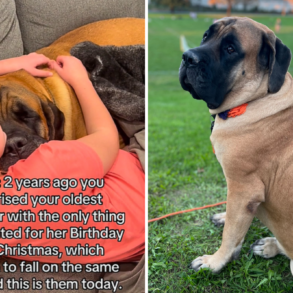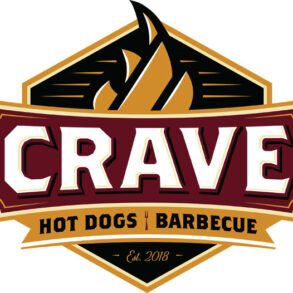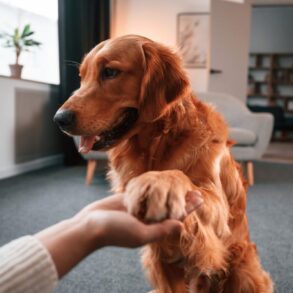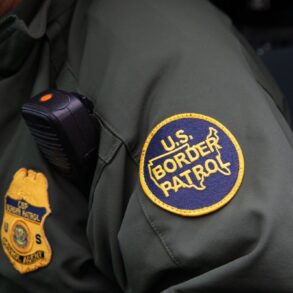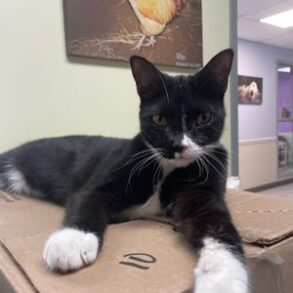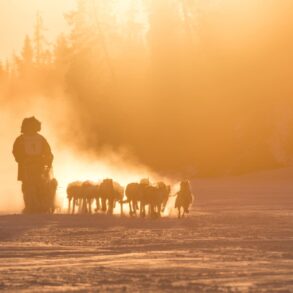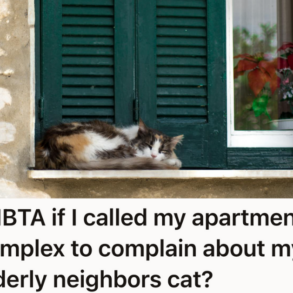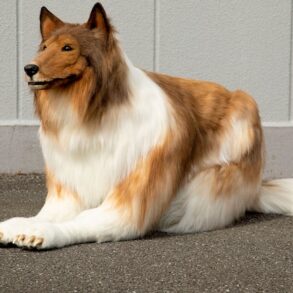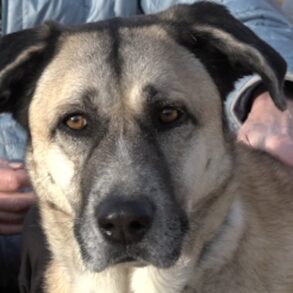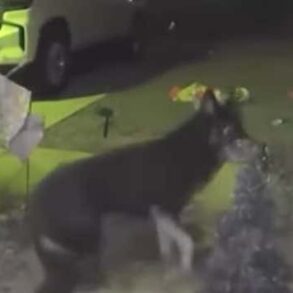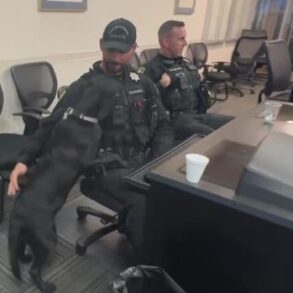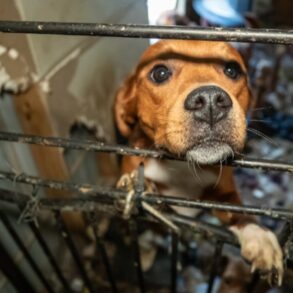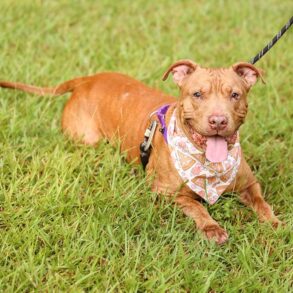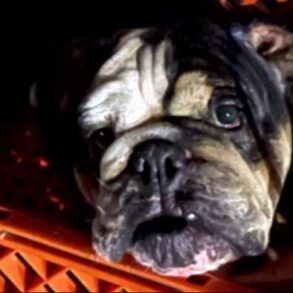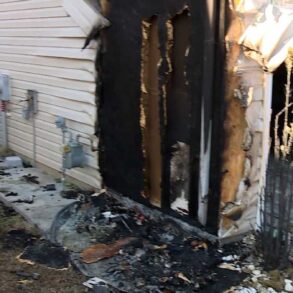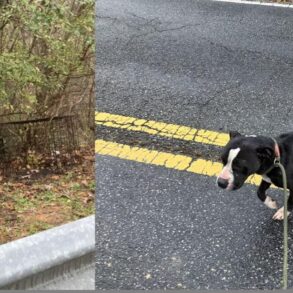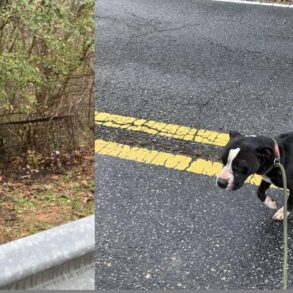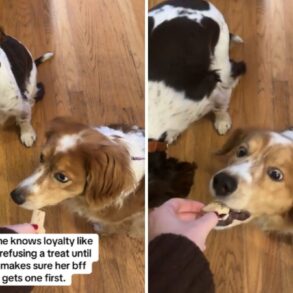As Colorado reintroduces wolves into the landscape, tension continues to rise as ranchers and state officials try to limit conflict with the predators.
While many of the conflict mitigation techniques have been around for a while, there’s refreshed energy — through conversations, investments and education — around nonlethal methods like using bright flags, range riders, electric fencing and livestock guardian dogs.
In 2020 and 2021, the United States Department of Agriculture’s Wildlife Services, in partnership with the Animal and Plant Health Inspection Service, received $1.38 million in funding to roll out a nonlethal livestock protection research program. It has implemented range riding, fladry, electric fencing and guard dog projects in 13 states including Colorado.
In Colorado, the project has placed livestock guardian dogs with sheep and cattle ranchers in an area where wolves, black bears, mountain lions and coyotes pose threats to livestock.
Tanya Espinosa, a public affairs specialist with the federal agency, said that while the Wildlife Services provides other nonlethal tools in Colorado, the decision to focus investment and efforts on the guardian dogs was based on conversations with ranchers, discussions with neighboring states and previous research by the agency on the dogs.
“We thought this would be a great opportunity to explore and expand the practical use of livestock protection dog breeds on multiple landscapes in Colorado,” Espinosa said.
Through the program, producers receive two free guardian dogs, coverage of the first year of medical costs and assistance with training.
These dogs are bred and trained to stick with and defend herds and flocks of animals, adding an extra set of eyes and protection for ranchers against predators.
In April, the agency began working with Colorado-based breeders of these dogs to “match specific breeds of (livestock protection dogs) to the producer, their operation, needs, comfortability with training, and the specific traits of the dogs,” Espinosa said.
Raising Turkish Boz Shepherds in the Yampa Valley

Ali Longwell
/
Vail Daily
This year, Jan and Pat Stanko became one of the suppliers to the U.S. Department of Agriculture program. They sent Turkish Boz Shepherd puppies to Yampa, Glenwood Springs, Walden, Morrison and Craig.
The Stankos run Pat’s family ranch in Steamboat Springs. Emerald Mtn. Ranch has been in operation for over 100 years and, if their son takes over operations one day, for five generations. Today, in addition to livestock guardian dogs, they also raise cattle, poultry and sheep.
Jan and Pat Stanko came to own and raise livestock protection dogs naturally around 15 years ago.
While living on the Front Range, the couple had some break-ins and a predator that was eating their chickens. After seeking ways to help, they ended up with Beau, a mixed Great Pyrenees and Anatolian shepherd livestock guardian dog.
When they moved back to take over the Steamboat ranch’s operations, they came with Beau in tow.
“But the predators here were just different,” Jan said. “He was running off three bears a night, and then we were having some larger coyotes that were coming in on the fence line and packs trying to get him to come out, so we thought we probably need another one.”
Enter Kiba, a Maremma and Great Pyrenees mix.
From there, Jan deepened her research on the various dog breeds suited for the work until she found a breed called Turkish Boz Shepherds.
“That’s what we ended up getting and never looked back,” she said.
As the name suggests, the breed originates from Turkey, with boz translating to “big strong fighting man.” Fully grown, the males can weigh between 120 and 190 pounds and the females between 100 and 170. With a large, muscular body type — and webbed paws good for snow — the dogs are both big enough to scare off predators but also fast and agile, Jan said.
The breed is also well suited as a guardian dog in temperament. Jan referred to the boz as independent thinkers, problem solvers, good with people — something she said is particularly important for them in a resort community with a lot of recreation on the landscape — and a lower prey drive.
While it may seem counterintuitive, Jan said the latter is important for her in that the boz will take a lookout position, assess what’s out there and won’t engage unless something physically enters the property, lessening the threat to the dogs as well.
“They’re always watching,” she said.
While they share many characteristics, the boz are slightly different from Turkish Kangals, a popular guardian dog breed that is also part of the USDA’s nonlethal program in Colorado.
Espinosa said that kangals were included as they will readily investigate potential threats, remain vigilant, decipher threats from non-threats and are friendly with humans.
“A kangal is more of a perimeter dog, meaning that they will usually range further out.… They’re probably a little bit faster,” Jan said. “Then, if something does happen, boz are more of the backup if they have to take something out.… They’re the muscle behind it. Every breed is a little bit different.”
Training the dogs for a job
While many of their protective characteristics are innate, Jan spends a lot of time helping train the dogs for specific traits that ranchers may need.
With the puppies, this includes exposing them to things like bubble wrap to get them used to the sound of guns, training them to understand electric fencing and familiarizing them with a variety of animals including cats, poultry, sheep and cattle that they might one day be around or protect.
While Jan does a lot of the training, some of it falls to the older dogs. The longer she has the puppies, the more they learn about how to protect themselves, where they are in the pack order and “bite inhibition” or learning to control the force of their bites.
While the USDA program had been giving the puppies to ranchers when they are around 8 to 10 weeks old, Jan prefers to keep them a few weeks longer, getting more of a sense for the dogs’ personalities and what type of family and job they will be good for.
Even once the dogs leave Emerald Mtn. Ranch, their training will continue.
“They take about two years, especially if you’re dealing with the larger predators for them to be more formidable as a deterrent,” Jan said.
“It’s going to take some training on that with your dog and your livestock and getting them used to each other. You don’t just throw the dog out there,” Pat added.
Contending with a new predator in Colorado: wolves
While Colorado ranchers have always dealt with conflict from predators, each comes with unique challenges.
“Each predator (is) going to be different about how it hunts and what it does,” Pat said.
The number of guardian dogs required depends more on a ranch’s predator load than its acreage, Jan added.
For example, because wolves often hunt in packs, a rancher would need a pack of dogs to have adequate protection.
“Sometimes having dogs can actually bring the wolves in, so if you’re going to have that be a problem, then you want to make sure that your pack is big enough that the risk versus reward for the predator isn’t worth the risk,” Jan said.
The success of livestock protection dogs, Espinosa said, depends more on how the “team” works together.
“(Livestock protection dogs) are innately bred for a specific purpose, but they work as a team with their handler, on their landscape, with other (livestock protection dogs), and in different situations,” Espinosa said.
As Colorado brings gray wolves into the state with its restoration efforts, it has changed the landscape for ranchers, the Stankos said.
Espinosa said that the USDA has seen a “steady interest” from ranchers to use livestock guardian dogs throughout the wolf reintroduction process.
When the wolf reintroduction was starting, the Stankos attended various meetings across the state with Colorado Parks and Wildlife, other ranchers and wildlife advocates.
“We went to the wolf meetings. We’ve been talking to the other ranchers and other people and what they’ve been dealing with,” Jan said. “There’s a lot of stress there, so if there’s anything that we can do to help both sides, I feel like we’re in a unique situation to be able to help others and try to keep doors open, especially with the ranchers that are on the verge of closing.”
Jan said she feels her niche as a breeder is that they’re embedded in the local community as well as the sheep and cattle industries.
“What I’m trying to do is something completely different, and I really do just want to help people,” she said. “We’re trying to get the word out about these dogs and trying to help and educate people.”
While livestock protection dogs can be helpful with predators like wolves, they are not a silver bullet, Jan said.
“Livestock guardian dogs, they’re another tool,” she said.
“It’s just a matter of trying to figure out how to work (livestock guardian dogs) into your operation. And one operation is not the same as the next operation, so what looks good on paper doesn’t mean it actually is applicable to everybody,” Pat added.
In matching ranchers and breeders, Espinosa said that they want ranchers to always be aware of the benefits of using various nonlethal tools, including using multiple in unison.
“The real magic happens when you match the right qualities of a pair of dogs, so they work together as a team, match that pair of dogs with the personality of a producer, and have a producer that is as committed to the training and success of their dogs as the dogs are committed to protecting their herd,” she said.
Like many of the nonlethal tools, guardian dogs are more effective as a proactive approach.
“I don’t want people that are already in a crisis situation, and they’re like, ‘I gotta have a dog,’ because then you get into troubles with that too because they are work and it is an investment,” Jan said.
With wolves specifically, having the dogs in place before a wolf pack lays a claim in the area is important, she said.
“Then you’re not trying to push (the wolves) out of an area that they already say is theirs,” Jan added. “And then you also have the trauma on the (livestock) from the wolves being in there.”
More puppies, more connections
As the Stankos look ahead, they are preparing to have more puppies in late winter and early spring, continuing to refine their training and placements as they continue forward with the USDA program.
The Wildlife Services program is working to build a training support network between its breeders and ranchers to ensure success with the use of these protection dogs in Colorado, Espinosa said.
“In Colorado, we have learned that building a community and network of (livestock protection dog) breeders and owners is essential, alongside proper bonding and training of the young dogs,” she said. “It takes generations to build a wealth of knowledge about (livestock protection dogs) and their use in different livestock operations throughout multiple landscapes and we just need to be willing to listen, learn, and adapt our behaviors to ensure these dogs have a good foundation to build on.”
To learn more about the USDA’s livestock guardian dog program and other breeders in the program, email Lauren Emerick at lauren.emerick@usda.gov or call 248-819-1702.
This post was originally published on this site be sure to check out more of their content.



